I’m on a quest to catch a fish in each of the 50 U.S. states – and to use each adventure as a means to explore conservation, the latest fisheries research and our complicated connections to the natural world.
I knew this river well from past trips: You’d drift a fly through any riffle, any pool, and catch 6-inch brook trout. Fun enough, especially if you had a new fly fisher traveling with you. But it was unremarkable as Rocky Mountain waters go: the western United States is full of streams and rivers filled with non-native, stunted brook trout.
But I had intel that this trip would prove different. I was in Yellowstone National Park, and I was searching for native fish.
By force of habit, I crept along the little river, keeping a low profile. I’d have to remind myself every few minutes to loudly sing out a few bars of 80s pop tunes. No need to surprise a grizzly.
I came to a river bend and saw a little splash dimple the surface. More like a slurp. I pulled out line on my 3-weight and cast a parachute Adams just upstream of the rise. And immediately, a fish hammered my fly.
This was no stunted brookie. I stripped in line, and nearly gasped at the gorgeous, 14-inch fish I brought to net. A westslope cutthroat trout, a fish that at one point was considered extirpated in Yellowstone.
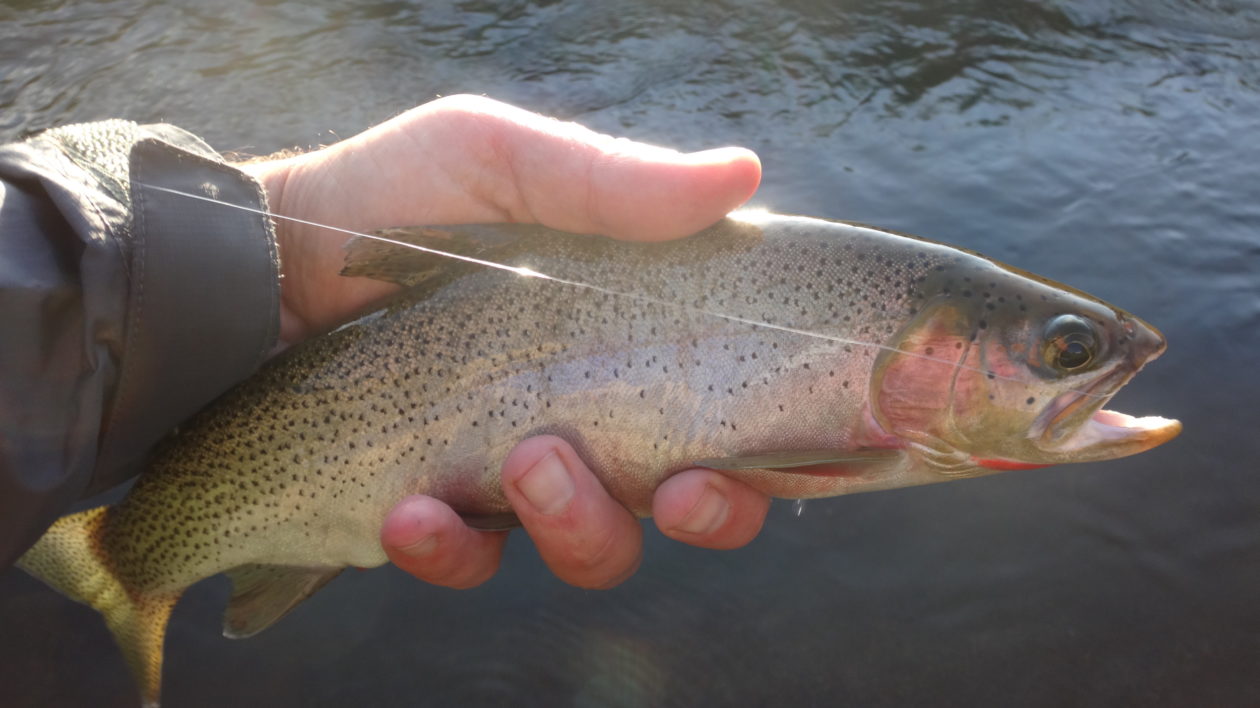
I cast again to the same spot, and was soon tight to another fat cutthroat. I could see a bigger pool upstream, and noted that it was pocked with rising fish. Mosquitoes swirled around my head, and I realized in my excitement I had forgotten to apply bug spray. No matter. I’d deal with the bites in the morning.
I walked up to the pool and cast. Again, a fish immediately smacked my fly. As I retrieved my line, I noted a gray, silvery fish, one with a long, rounded dorsal fin. An Arctic grayling. My first grayling in the “lower 48.”
Yellowstone National Park is famous for its big wildlife: the wolves, bison, bears and more. But the underwater wildlife is no less special, even if it is largely out of sight of most tourists. The native fish of Yellowstone may have been initially overlooked, but they’re now the subject of one of the most hopeful restoration efforts on the continent.
The cutthroat trout and grayling I caught were testament to that effort.
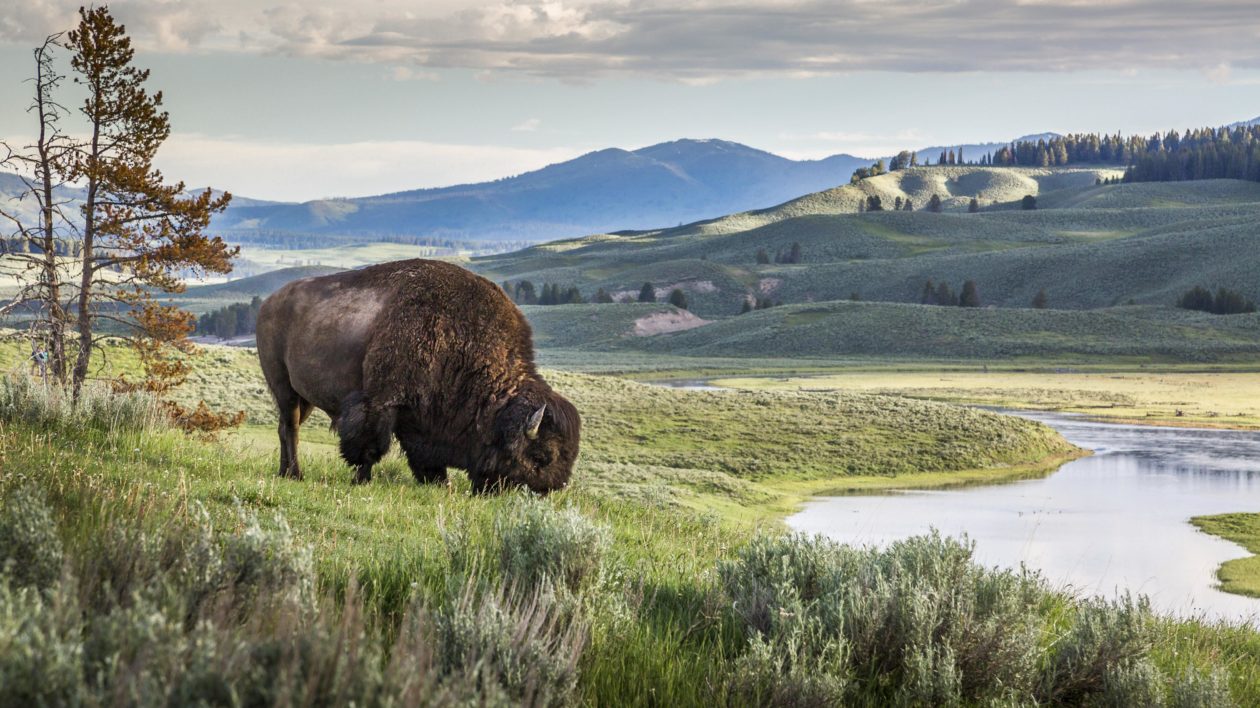
Cutthroats Lost and Found
In Yellowstone’s early years, “fisheries management” consisted largely of stocking the park’s waters with familiar (and non-native) game species. Park managers stocked brown, rainbow and brook trout in fishless waters. More damaging, they also stocked them in waters inhabited by native species.
Over time, both science and values shifted. The National Park Service embraced a vision to protect ecosystems and biodiversity, including native fish. Non-native fish were no longer stocked and ambitious native fish restoration and reintroduction programs were established.
One of the highest-profile examples is the ongoing effort to remove invasive lake trout from Yellowstone Lake. Lake trout devastated Yellowstone cutthroat trout populations, in turn impacting an entire ecosystem.
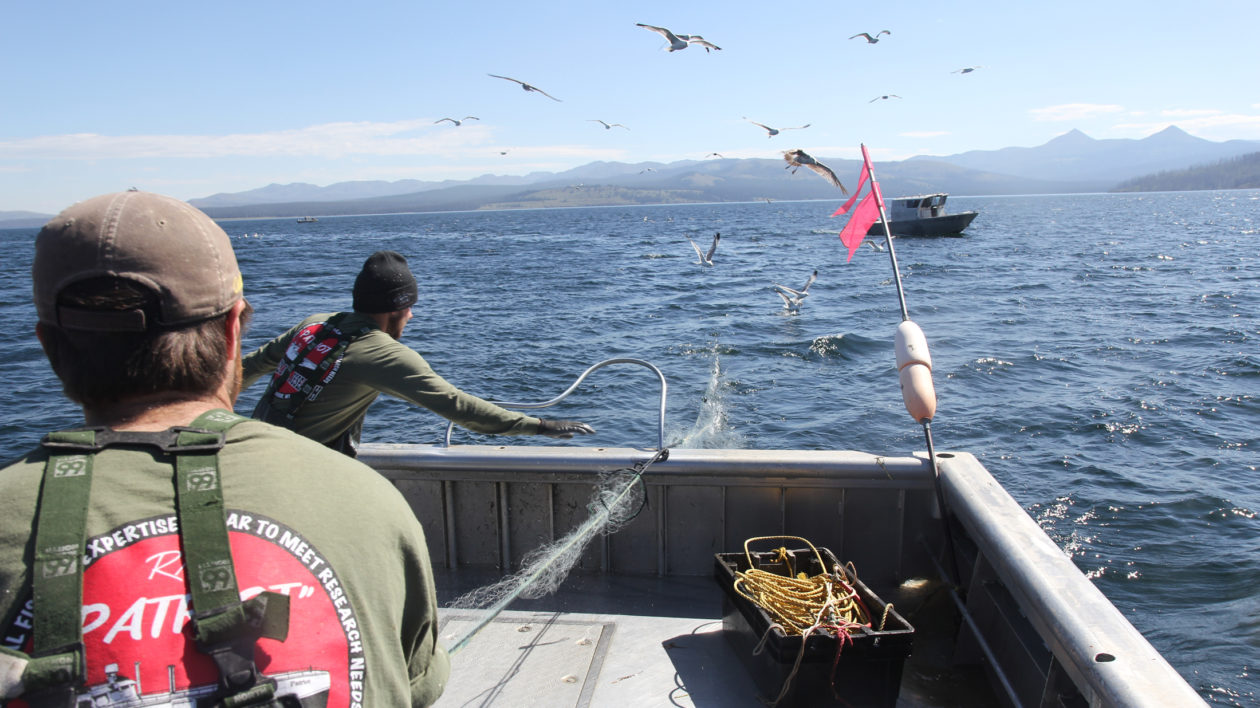
Even if you aren’t a fish nerd, if you visit Yellowstone, the Yellowstone cutthroat trout is the native fish you’re most likely to encounter. You might find an otter feasting on one in Trout Lake, or a cutthroat jumping up waterfalls in the Yellowstone River. This fish is on posters and in brochures.
But there’s another cutthroat subspecies in the park that is even more imperiled: the westslope cutthroat. “Twenty years ago we actually thought genetically-pure westslope cutthroat trout were totally gone from the park,” says Todd Koel, the national park’s fisheries biologist.
That changed when a retired Forest Service biologist skied into a then-unnamed tributary of Grayling Creek and saw some interesting fish, fish that turned out to be westslope cutthroat trout. Those trout had been protected from non-native fish invasions in an unusual way: by a road without a culvert.
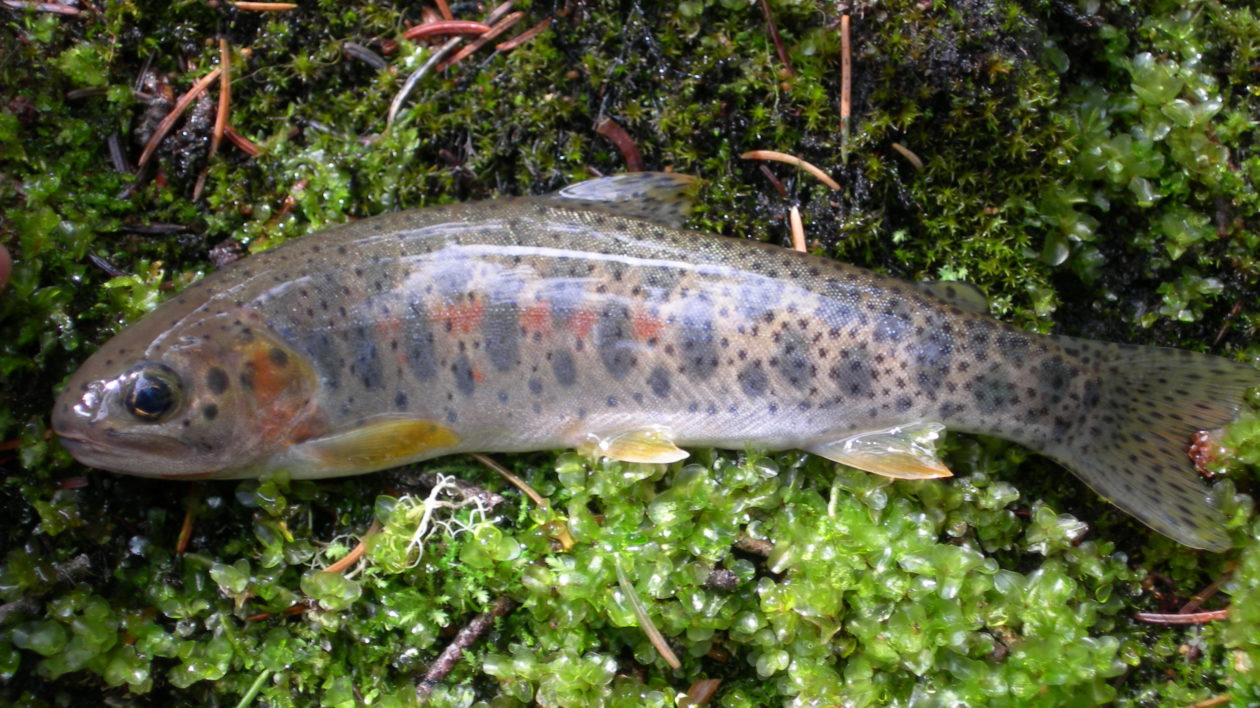
“A road was built along the west side of the park in the early-1900s,” says Koel. “Because there is no surface water in this lower reach of the tributary after snowmelt run-off ends in early-summer, when they crossed the dry creek to create the road bed they just added rock, without a culvert”. That blocked fish passage, usually not good for conservation. But in this case, it protected what we now call Last Chance Creek from non-native fish that were introduced in the 1920s to Grayling Creek downstream. It blocked them from invading the headwater cutthroat habitat.”
Small stream surveys in the northern range of the park then found another population of pure westslope cutthroat in another isolated stream, Geode Creek, whose fish were stocked by managers in the 1920s as “blackspotted trout”, the name given to cutthroat trout prior to the various subspecies (e.g. “Yellowstone” or “westslope”) being recognized.
These two populations discovered in 2005 formed the nucleus for a reintroduction effort, part of an ongoing effort to restore native fish populations around the park.
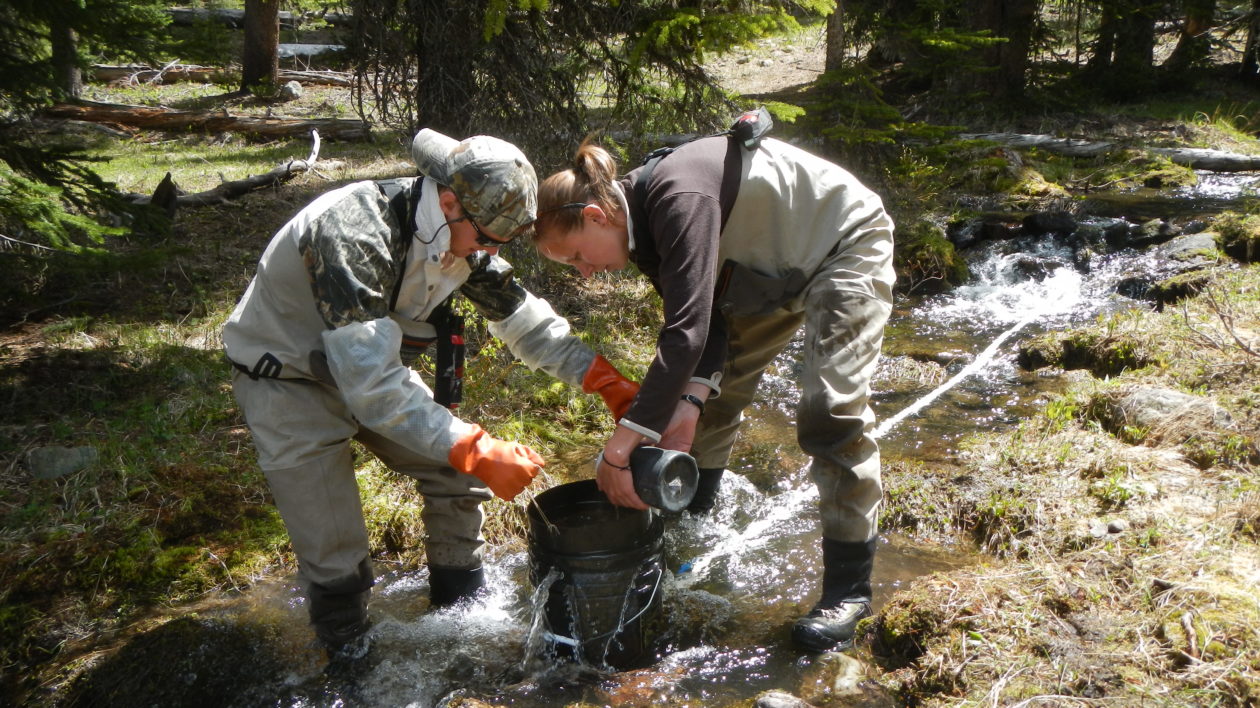
A Fishy Future for the Gibbon
Park biologists identify streams and rivers for native fish recovery based on the feasibility of removing non-natives and ensuring that the water can’t be recolonized by those fish after restoration.
One river that seemed perfect for reintroducing both native westslope cutthroat trout and Arctic grayling was the Upper Gibbon River. The river contained three large, impassable waterfalls, essentially keeping it off-limits to non-native fish. There was one wrinkle.
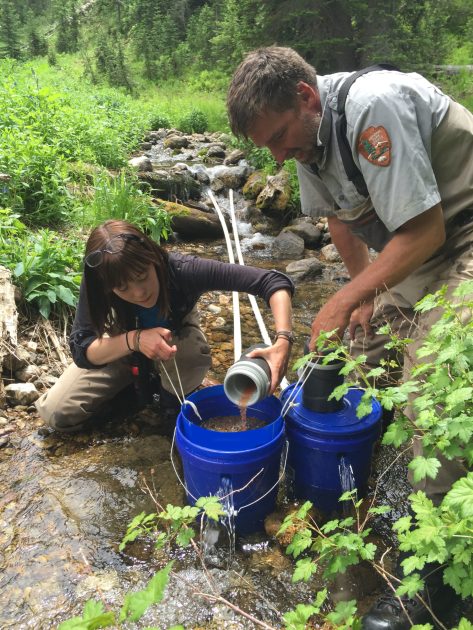
“The Upper Gibbon was historically fishless,” says Koel. “It was the first river that was stocked in the park, with nonnative rainbow trout. But before that, it didn’t have any trout.”
Non-native brook trout were also introduced. As in so many streams in the West, brook trout proliferated in the Upper Gibbon. They were small, stunted fish: the fish that I caught on previous visits to Yellowstone.
Koel says that normally, the National Park Service would not have restocked a historically- fishless stream. “Our analysis found no negative impacts of fish being in the Upper Gibbon,” says Koel. “There are no threatened amphibians or invertebrates. We also recognized that climate change is shifting ranges for species. We essentially recognized that stocking westslope cutthroat and grayling in the Upper Gibbon was assisting their adaptation to climate change, and ensuring a future for native fish in the park for generations to come.”
These fish were reintroduced to other waters as well. And they’re thriving.
Evening on the Gibbon
When I had a free evening on a recent family trip to Yellowstone, I chose the Upper Gibbon. It was familiar and easy to access. While my love of native trout fishing often requires traveling tire-shredding roads and bushwhacking through miles of thick brush, this river is right in the heart of main park roads.
After landing several fish, the action suddenly ceased. Fish still rose in a long pool, dimpling the surface as they took tiny mayflies. I switched flies and soon began hooking grayling after grayling. Like the westslope cutthroats, grayling nearly disappeared from the park (and most of the United States outside Alaska).
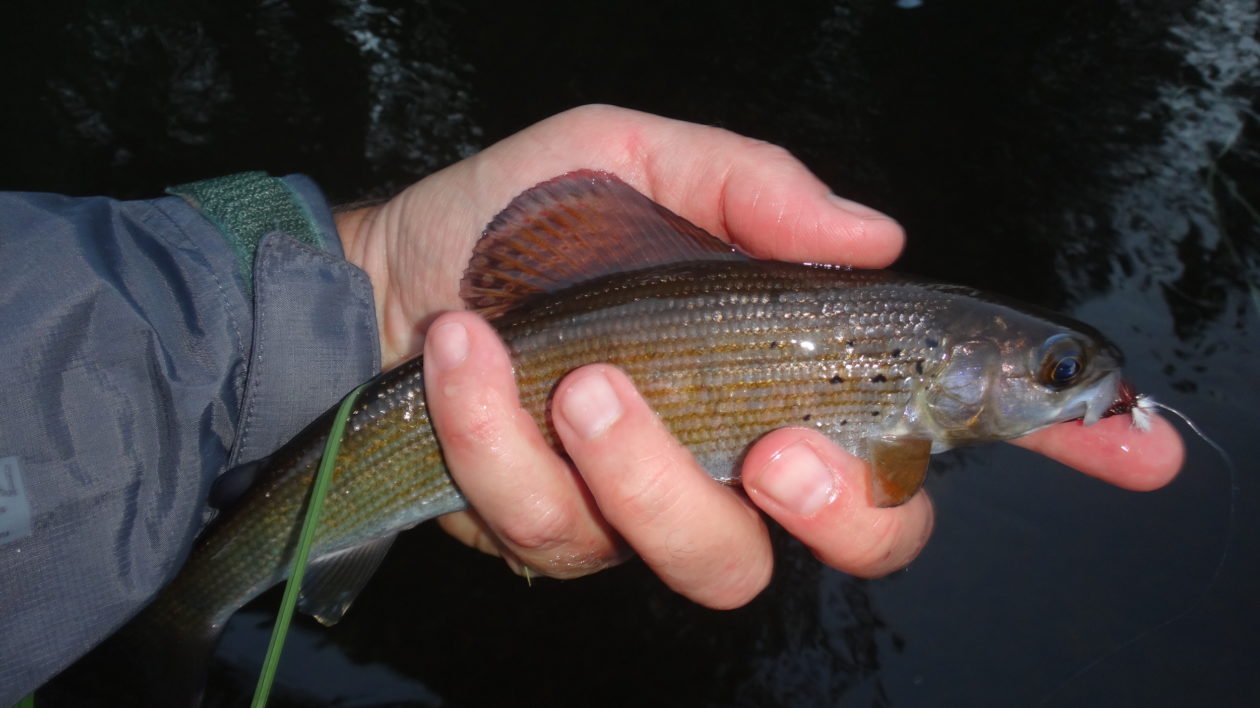
I hope that most readers of this blog understand the ecological importance of native species. In a large, intact ecosystem like Yellowstone, they are part of a fabric that includes pelicans and otters and grizzly bears and aspens and much more. As an angler, I admit that the draw of fishing for new fish is a significant draw.
But that’s not the case for everyone. While more anglers recognize the value of native fish, and biodiversity, some only value familiar gamefish species. Koel acknowledges this but believes more anglers are understanding just how special fish like cutthroat trout and grayling are.
“Native fish conservation is important for the ecosystem, but it also adds another dimension to the fishing experience,” says Koel. “There are still plenty of places to go for big brown trout and hard-fighting rainbows.”
He notes that he continues to “push hard” for native fish restoration wherever feasible. And angler support is important. Sometimes, that also means that they shift their behavior. In some rivers, the park now requires anglers to kill any non-native fish they catch.
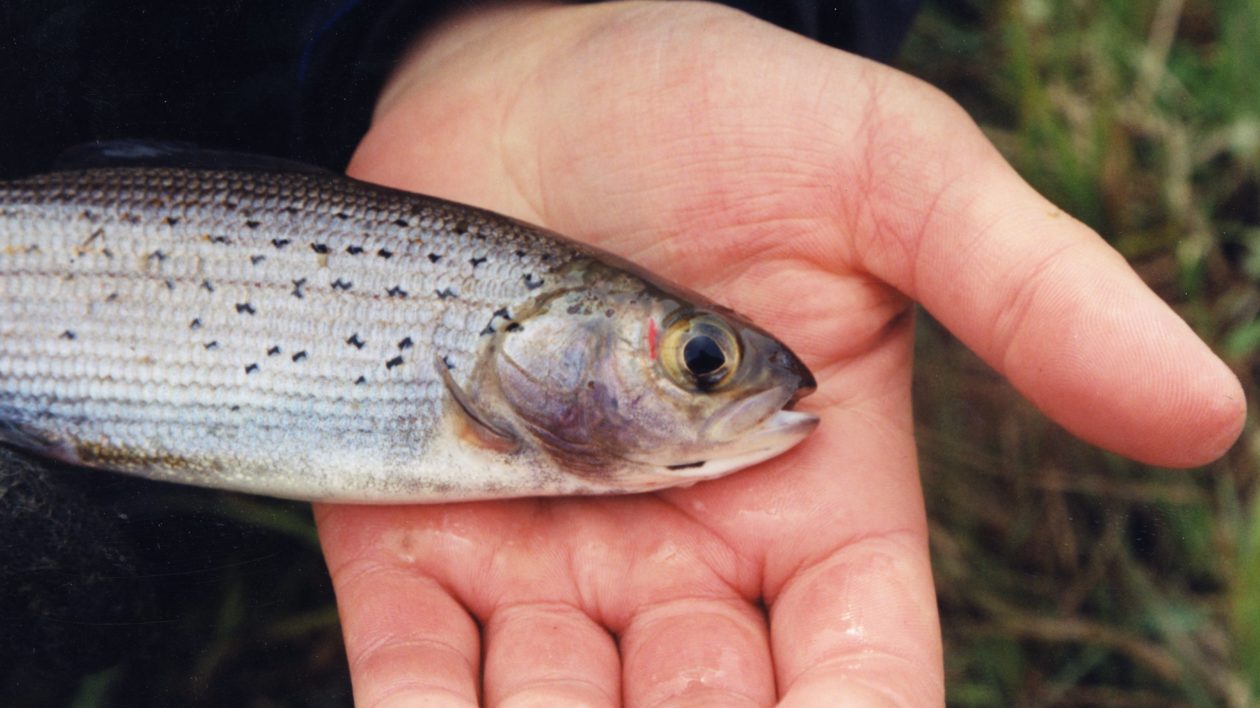
“That is asking anglers to make a paradigm shift,” says Koel. “Catch and release has become standard practice among fly fishers. But catch and release as a blanket philosophy isn’t helping. Putting a rainbow trout back in the Lamar River isn’t conservation because they are causing serious harm to the cutthroat trout there, one of few remaining large-river migratory cutthroat populations in existence. But culture shifts, especially with fly fishermen, takes time.”
And perhaps there’s nothing to help make that shift than getting out on a stream in pursuit of native fish. On the Upper Gibbon, I can see a rare rapid conservation success story before my eyes. In 2017, brook trout were removed. In 2018, native fish fingerlings were stocked. Just two years later, I can catch big, healthy cutthroat trout and grayling.
It doesn’t get much better.
By dusk, mosquitoes swarmed my face, my hands, even the slots of my water sandals. Still, the fish kept rising and I kept casting. I realized that, on my first visit to Yellowstone, there was no place in the park where I could catch westslope cutthroat trout. And now they’re all around me. Like the reintroduction of wolves, the reintroduction of these fish helps restore the park, but also makes my experience richer.
I was lost in these reflections when I heard a slight footstep behind me. I swung around and my heart jumped when I saw a patch of fur. But as my eyes focused in the low light, I saw a curious red fox, just ten yards away. I shuddered with the realization that it could have been a bear.
I packed up my fly rod, grateful for the wild things of Yellowstone: for the beasts that roam the land, yes, but also the special creatures just beneath the surface.
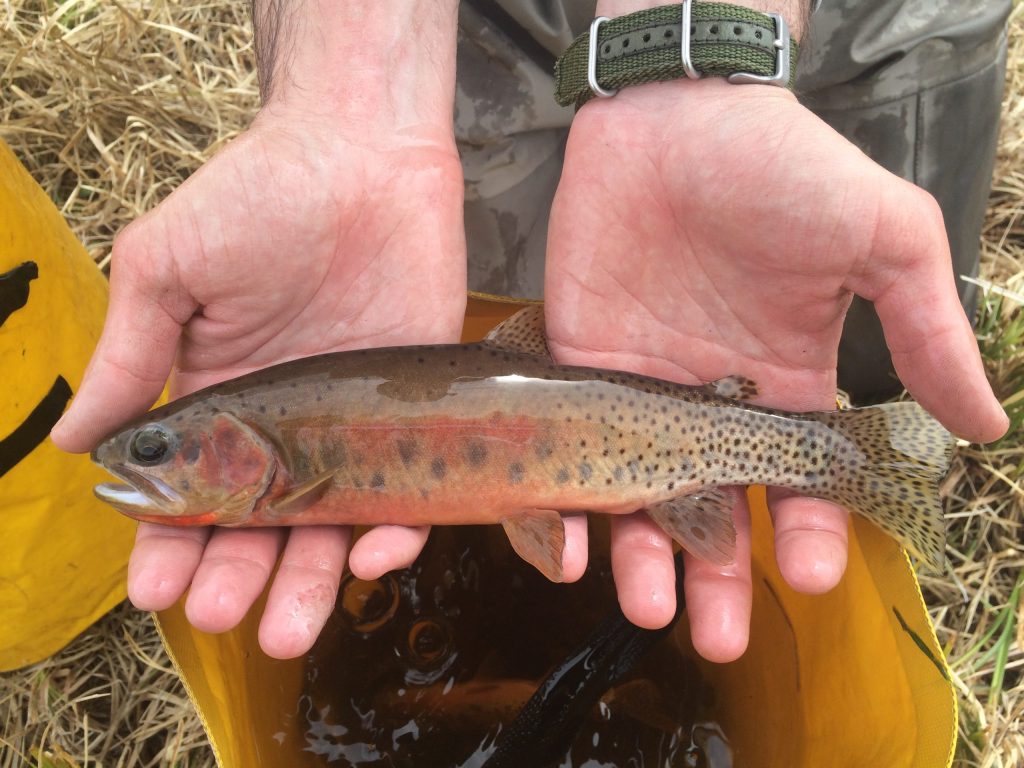



Great article. Please don’t write any more about it so it stays “secret”. 😁😁. I have fished the Upper Gibbon many times, as well as Grebe Lake. I haven’t been back for several years, but I will surely go back this year after reading your article. Thanks for the insight to this magical portion of the Park.
Hi Matthew,
I recently finished Fishing through the Apocalypse and really enjoyed it. I just took up fly fishing this past summer and the seminal experience happened in Yellowpine, ID on the East fork of the South fork of the Salmon river. As I’m sure you are aware, the Midas corp. has designs on reopening the Stibnite mine and Iwas hoping to get your thoughts on that project. You had a few comments on mining in your book and as a new, avid angler, I want to educate myself on the issues impacting native fish, especially where mining is concerned.
Thanks,
Jason
I commend and thank Mr. Miller for using his “fly fishing addiction”, to educate readers on the issue regarding the need to restore native fish to their ancestral habitats.